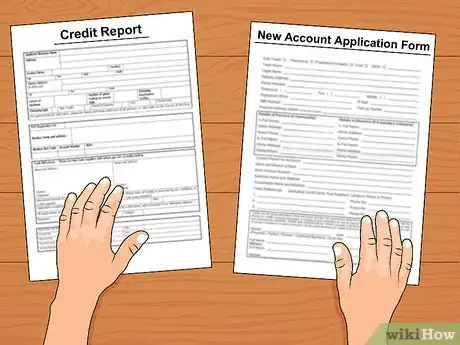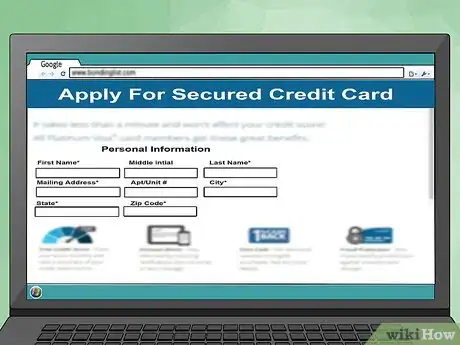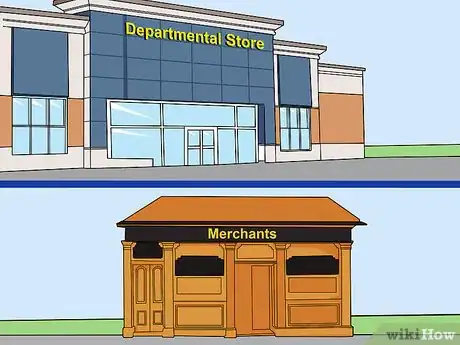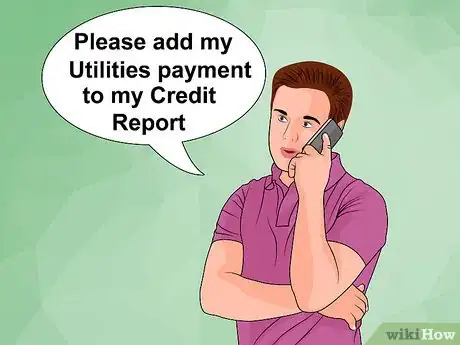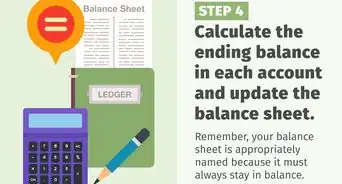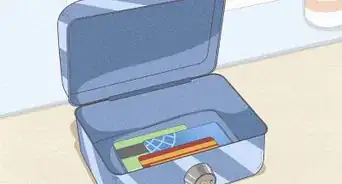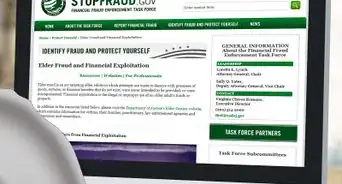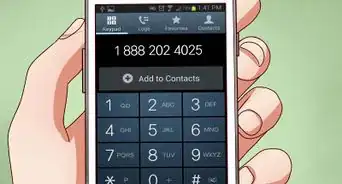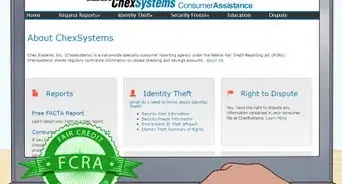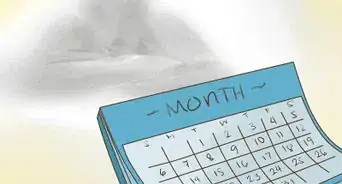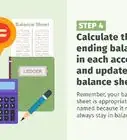This article was co-authored by Michael R. Lewis. Michael R. Lewis is a retired corporate executive, entrepreneur, and investment advisor in Texas. He has over 40 years of experience in business and finance, including as a Vice President for Blue Cross Blue Shield of Texas. He has a BBA in Industrial Management from the University of Texas at Austin.
wikiHow marks an article as reader-approved once it receives enough positive feedback. In this case, 86% of readers who voted found the article helpful, earning it our reader-approved status.
This article has been viewed 250,279 times.
A credit report tradeline is simply an industry term to describe a credit account. If you have credit accounts, you therefore have tradelines on your report, and they may come in the form of line of credits, car loans, mortgages, credit cards, and payday advances. Since creditors look at tradelines to determine if you are creditworthy, adding positive tradelines (credit accounts with good repayment history) to your credit report can be very useful in helping you obtain credit.
Steps
Creating New Credit Accounts
-
1Understand the benefits of creating new credit accounts. When you create a new credit account, you accomplish a few things. First, you create a new tradeline, which is a new opportunity to have a positive record on your credit report. Secondly, opening new tradelines can improve your credit score by increasing your total available credit, and adding to the types of credit you have (providing you are very responsible with payments). [1]
- Two key factors that determine your credit score are the types of credit you have, including things like mortgages and credit cards, and the amount of credit you have compared to how much you have used. Having more kinds of credit improves your credit score, and having more credit also improves your credit score (providing most of it is unused).
- Adding tradelines to your account can easily destroy your credit score if you are not extremely responsible with the new credit accounts. In fact, a wise suggestion is to not even use the new credit you have, or only use it once a month for a small amount just to show positive repayment history.
-
2Decide if you need to create new tradelines. If you already have good credit from a variety of different credit sources and a good history of paying off that debt, chances are you don't need to add additional tradelines. The important thing is to strive for quality over quantity. You want several different lines of credit, like a credit card or two and a mortgage payment, that you've paid consistently for years. In addition, be sure to stay well below the limit on your credit cards. It won't hurt you to add more tradelines if you're careful with them, but after a certain point adding more won't significantly increase your credit score.Advertisement
-
3Apply for a secured credit card. One tradeline that is both easy to get approved for and hard to abuse is a secured credit card. This is an excellent place to start if you want to add tradelines to your account and have poor credit. A secured credit card requires a security deposit equal to the amount of your credit line.
- Simply deposit the predetermined amount in your account, and then you can borrow against it.
- You can apply for a secured credit card online through your local bank, or you can visit the branch and apply there. Most banks offer some form of secured credit card.
- Like unsecured credit cards, these cards do have fees, generally an interest rate and an annual fee. It is wise to shop around beyond your local bank to compare interest rates and annual fees to make sure you are getting the best deal possible.
-
4Apply for credit accounts through department stores and merchants. Gas stations, credit unions, department stores, furniture retailers and jewelry stores are among creditors who sometimes have relatively lenient qualification processes and are, therefore, good places to start if you don't already have strong credit. These cards usually offer discounted purchases from the store as well.
- Consider this option if you have poor credit and are having difficulty getting approved for a traditional card. It is also important that you frequently use the store through which you are getting the card. This will allow you to build credit while saving money at the store.
- Note that these cards often have higher rates than traditional credit cards. As a result, it is important set clear limits to how much you can spend. Namely, never spend more than you can afford to pay in a single month. It is important to remember the goal of adding tradelines is to improve your credit, and it is therefore important to be very strict with any new credit accounts.
-
5Consider more traditional credit products. If you have the credit score and feel like you can responsibly manage more credit, consider applying for an additional credit card, or a line of credit. Generally speaking, try to apply for a type of credit you do not have. If you already have a credit card, consider applying for a line of credit. This shows creditors you can handle different types of credit.[2]
- If you are unable to obtain approval for these types of products, consider using a co-signer. A co-signer is a friend, relative, or other individual who is willing to agree to pay the loan if you cannot. This can help gain approval. Remember that if you stop paying, you can damage the credit of your co-signer.
- Whatever new credit you get, use it sparingly. A good rule is never use more than 50% of your available limit.
Adding Pre-Existing Credit Accounts to Your Credit Report
-
1Ask a parent, relative, or close friend to add you to their account. This is a commonly recommended and handy way to add tradelines to your credit account with very low risk. Quite simply, credit accounts can often have more than one authorized user. If you ask someone you have a trusting relationship with to add you to their account as an authorized user, the tradeline will be added to your credit report. This means you can benefit from the other person's positive repayment history.
- On the other hand, you can also do major damage to the other persons credit history (and they can in-turn do damage to yours).
- To correct this, ask to be added as an authorized user, but be given no access to the accounts. This means you will not receive a card or any other means to spend with. At the same time, make sure the person who authorizes you has excellent credit history and stable income to make sure they do no damage to your credit history. IZM Credit Services offers this type of service.
-
2Report any in-store accounts to the credit bureaus. Three credit bureaus (Experian, Equifax, and TransUnion) determine your credit score, and creditors typically report your credit information to them. However, not all creditors do so, and this is especially true for various in-store accounts (like with a department store for example) for which you may have an installment loan. You can get these added to your credit report, which will add tradelines.[3]
- For example, you may have bought a refrigerator, jewelry, a washer/dryer, or a new hot tub. You may be paying these items through an installment loan, and you may be paying these items regularly, and on-time.
- These stores often do not report credit information to the bureaus unless the account has gone to collections. However, they should be reporting positive information as well. You can simply ask them to report your account to the credit bureau's if you have been re-paying on-time and on-schedule.
- Make sure they report the information to all three bureaus.
-
3Obtain a copy of your credit reports. Once you have added in-store accounts, you want to actually check your credit reports to see what is currently on there. The reason for this is because it will be important to confirm that all your current credit is on there (especially fully paid previous accounts). To get your credit report, visit www.annualcreditreport.com. You can get one free credit report every 12 months from each of the three bureaus through this site.
- Make sure to obtain reports from all three bureaus to make sure there are no inaccuracies or inconsistencies between them.
- Note that the credit score is not free ( a small fee needs to be paid) but your main interest is in the reports, so you can check what tradelines are currently listed.
-
4Confirm that previous, successfully paid accounts are listed. All your current accounts should be listed on the report, but it is important to note that former loans that were appropriately paid can and should also be listed as tradelines. If you have successfully paid off a loan, creditors should know about it, as this helps give them a more complete picture of your behavior as a borrower.
- For example, you may have a previous auto-loan, or student loan that you successfully paid off. If these items are not listed on your report, it is very important you call your lender and request the item be sent to the three credit bureaus.
- If they state they have sent it to the credit bureaus, the issue may be on their end. In that case, you can contact them to ensure to see where the error was and how they can correct it. This simple step can add greatly to your credit.
-
5Add your utilities payments to your credit report. Utilities, like department stores, often only report you to the credit bureaus if you account has been sent to collections, or if you have not been paying on-time. If you have been regularly and successfully paying your utilities bills, however, this should reflect on your credit report. You can contact your utilities company and ask them to add the data to your credit report.[4]
- Not all utility companies will comply, but many will. It is always worth it to ask, as the results can significantly improve your credit report.
Adding Your Rent to Your Credit Report
-
1Understand how adding rent to your credit report works. Rent tradelines were typically not allowed on your credit score. However, this changed in 2011 when Experian announced they would be including rent. Recently, TransUnion also announced that they would also be including rent data. It is important to know that unlike other accounts, you cannot report rent directly to the credit bureaus yourself, and you must use a third-party service to do so.[5]
- The three third-party rent reporting services are William Paid, Rental Karma, and Rent Reporters.
-
2Choose one of the three rent reporting services. All three services generally work the same: you submit and verify your payments to the reporting service, and then they send the information to the credit bureaus. The major difference is cost.
- Rent reporters is free for the first thirty days,and then costs $9.95 per month. Rental Karma is free, and William Paid is free but only if you pay your rent via electronic funds transfer. If you pay with cash or credit card, the fee is 2.95% of the rental amount.
- Visit the websites for each of these services to register or to learn more.
-
3Recognize that rent reporting does not affect your FICO score. While creditors will see rent tradelines on your account, it currently does not affect the main credit score, which is known as the FICO score. It does, however, affect your Vantage Score, which is another type of credit score that your creditors will often take into account.
Warnings
- Consider your debt-to-income ratio when opening new credit report tradelines. Some creditors may refuse to extend new credit to you if your debt is too high in comparison to your income, according to their debt-to-income standards. For example, if your monthly debt payments equal more than 33 percent of your monthly income, you may not qualify for additional credit lines.⧼thumbs_response⧽
- Beware of applying for multiple new credit accounts in a condensed timeframe, as credit inquiries are reported to the credit bureaus and can have a negative effect on your credit report scores.⧼thumbs_response⧽
- Do not report tradelines that are not in good standing to the credit bureaus, as this would only be detrimental to your ability to obtain additional credit accounts and improve your credit.⧼thumbs_response⧽
References
- ↑ http://www.investopedia.com/articles/pf/10/credit-score-factors.asp
- ↑ http://www.streetdirectory.com/travel_guide/165514/credit_matters/adding_tradelines__and_other_ways_to_improve_your_credit_report.html
- ↑ http://www.streetdirectory.com/travel_guide/165514/credit_matters/adding_tradelines__and_other_ways_to_improve_your_credit_report.html
- ↑ http://www.newhorizon.org/credit-info/adding-tradelines-to-your-credit-report/
- ↑ http://www.creditsesame.com/blog/using-your-rent-to-build-credit/
About This Article
To add positive tradelines to your credit report, start by checking your credit report to see if it includes all your former loans that were successfully paid. Then, call any lenders who are not listed and ask them to send the data to the credit bureaus. Additionally, see if you can add pre-existing accounts to your credit report, such as utility payments and in-store accounts that you’ve been paying on time. You can also add your rent payments to your credit report, but keep in mind that you would need to do this through a third-party service like Rent Reporters. For more advice from our Finance co-author, including how to keep negative tradelines off your credit report, keep reading!

